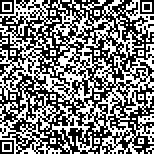| 引用本文: | 王孟虎,孙一帆,许亮,康廷国,左亚锋,翟俊杰,李金洋,孟祥松,汤建,王文建.基于高通量测序技术对人参花及其易混淆品鉴定研究[J].中国现代应用药学,2023,40(14):1950-1956. |
| WANG Menghu,SUN Yifan,XU Liang,KANG Tingguo,ZUO Yafeng,ZHAI Junjie,LI Jinyang,MENG Xiangsong,TANG Jian,WANG Wenjian.Study on Identification of Ginseng Flos and its Confounding Products Based on High-throughput Sequencing Technology[J].Chin J Mod Appl Pharm(中国现代应用药学),2023,40(14):1950-1956. |
|
| |
|
|
| 本文已被:浏览 1232次 下载 855次 |

码上扫一扫! |
|
|
| 基于高通量测序技术对人参花及其易混淆品鉴定研究 |
|
王孟虎1,2, 孙一帆3, 许亮2, 康廷国2, 左亚锋1, 翟俊杰1, 李金洋1, 孟祥松1, 汤建1, 王文建1
|
|
1.亳州学院, 安徽 亳州 236800;2.辽宁中医药大学, 辽宁 大连 116600;3.亳州职业技术学院, 安徽 亳州 236800
|
|
| 摘要: |
| 目的 利用高通量测序技术对人参花及其易混淆品进行鉴定,并利用ITS2测序技术验证高通量测序技术对物种鉴定的准确性。方法 对人参花掺伪样品扩增产物进行高通量测序,使用cutadapt、PEAR、PRINSEQ、Usearch、RDP classifier、SINTAX软件获得分类单元(operational taxonomic unit,OTU)序列,舍弃菌类、unclassified等非绿色植物序列;为避免假阳性情况发生,删除序列数<100条或碱基数<200 bp的OTU序列。对人参花、西洋参花、三七花的ITS2扩增产物进行测序,利用MEGA 11.0对人参花、西洋参花、三七花的ITS2、OTU、GenBank上下载的碱基序列构建邻接法系统聚类树、遗传距离、种间信息位点及对ITS2、OTU碱基序列分别进行Blast分析来验证高通量测序技术对物种鉴定的准确性。通过构建ITS2及OTU碱基序列二级结构对人参花、西洋参花、三七花进行比对分析,根据物种间二级结构的不同对物种进行鉴定。结果 高通量测序共得到54 653条有效序列,人参花、三七花、西洋参花的序列号分别为OTU1、OTU2、OTU3及对应的有效序列分别为31 325,857,442条。通过对各物种的ITS2及OTU碱基序列进行Blast检索,均支持各个物种。人参花与西洋参花、三七花种间遗传距离分别为0.010,0.033,人参花与西洋参花、三七花分别有2,7个信息位点;邻接法系统聚类树显示各个物种均独立聚为一支,其中人参花与西洋参花聚为一大支与三七花并列。人参花与西洋参花二级结构一致,但与三七花在臂Ⅳ及臂Ⅳ与臂Ⅰ之间有A、B、C 3处不同。结论 基于高通量测序技术能够准确鉴定人参花、西洋参花、三七花,对掺伪样品亦具有较强的鉴别能力,为市售人参花样品鉴定提供一定思路。 |
| 关键词: 人参花 西洋参花 三七花 DNA条形码 高通量测序 掺伪粉末 |
| DOI:10.13748/j.cnki.issn1007-7693.20221898 |
| 分类号:R284.1 |
| 基金项目:辽宁省“百千万人才工程”资助项目;安徽高校自然科学研究项目(KJ2021A1143,KJ2020A0765);亳州学院科研项目(BYZXKTD202004,gxbjZD2020095) |
|
| Study on Identification of Ginseng Flos and its Confounding Products Based on High-throughput Sequencing Technology |
|
WANG Menghu1,2, SUN Yifan3, XU Liang2, KANG Tingguo2, ZUO Yafeng1, ZHAI Junjie1, LI Jinyang1, MENG Xiangsong1, TANG Jian1, WANG Wenjian1
|
|
1.Bozhou University, Bozhou 236800, China;2.Liaoning University of Traditional Chinese Medicine, Dalian 116600, China;3.Bozhou Vocational and Technical College, Bozhou 236800, China
|
| Abstract: |
| OBJECTIVE To identify Ginseng Flos and their confounds by using the high-throughput sequencing technology, and to verify the accuracy of high-throughput sequencing technology in species identification by using ITS2 sequencing technology. METHODS High-throughput sequencing was performed on the amplified products of Ginseng Flos adulterated samples, use cutadapt, PEAR, PRINSEQ, Usearch, RDP classifier, SINTAX software to obtain operational taxonomic unit(OUT) sequences, remove fungi, unclassified and other non-green plant sequences. To avoid false positives, delete OTU sequences with a sequence number <100 or base numbers <200 bp. The ITS2 amplification products of Ginseng Flos, Quinquefolii Flos, and Notoginseng Flos were sequenced. To verify the accuracy of high-throughput sequencing technology for species identification, MEGA 11.0 was used to construct neighbor joining system cluster tree, genetic distance, interspecific information loci and Blast analysis of ITS2 and OTU base sequences of Ginseng Flos, Quinquefolii Flos, and Notoginseng Flos. RESULTS A total of 54 653 valid sequences were obtained by high-throughput sequencing, the serial numbers of Ginseng Flos, Quinquefolii Flos, and Notoginseng Flos were OTU1, OTU2, OTU3, respectively, and the corresponding effective sequences were 31 325, 857 and 442, respectively. By performing a Blast search of ITS2 and OTU base sequences of each species, each species was supported. The genetic distance between Ginseng Flos and Quinquefolii Flos and Notoginseng Flos was 0.010 and 0.033, respectively. Ginseng Flos and Quinquefolii Flos, Notoginseng Flos had 2 and 7 information sites, respectively. The neighbor join system cluster tree showed that the species were clustered independently into one branch, with Ginseng Flos, and Quinquefolii Flos clustered as a large branch and juxtaposed with Notoginseng Flos. Ginseng Flos was the same as Quinquefolii Flos secondary structure, but with Notoginseng Flos there were three different positions but there were A, B and C differences between arm Ⅳ and arm Ⅰ of Notoginseng Flos. CONCLUSION The high-throughput sequencing technology can accurately identify Ginseng Flos, Quinquefolii Flos and Notoginseng Flos, and has a strong ability to identify adulterated samples, which provides a certain idea for the identification of commercial Ginseng Flos. |
| Key words: Ginseng Flos Quinquefolii Flos Notoginseng Flos DNA barcoding high-throughput sequencing dulterate powder |
|
|
|
|
